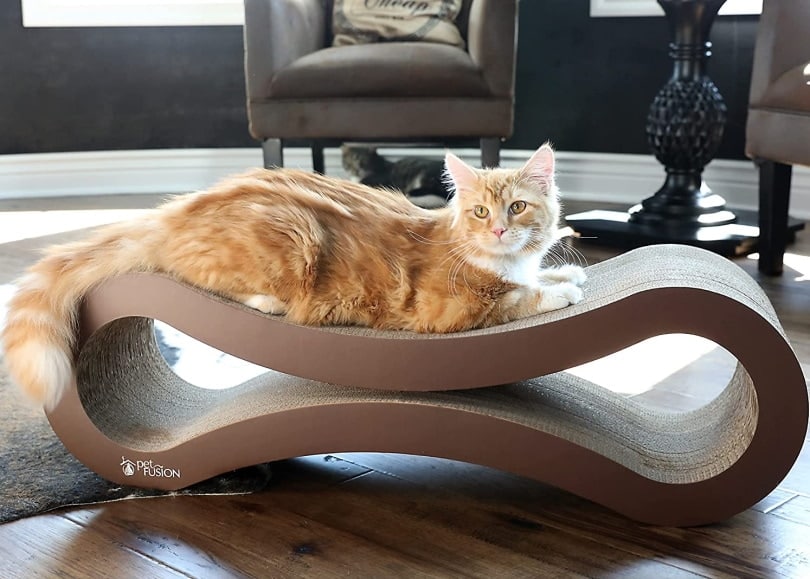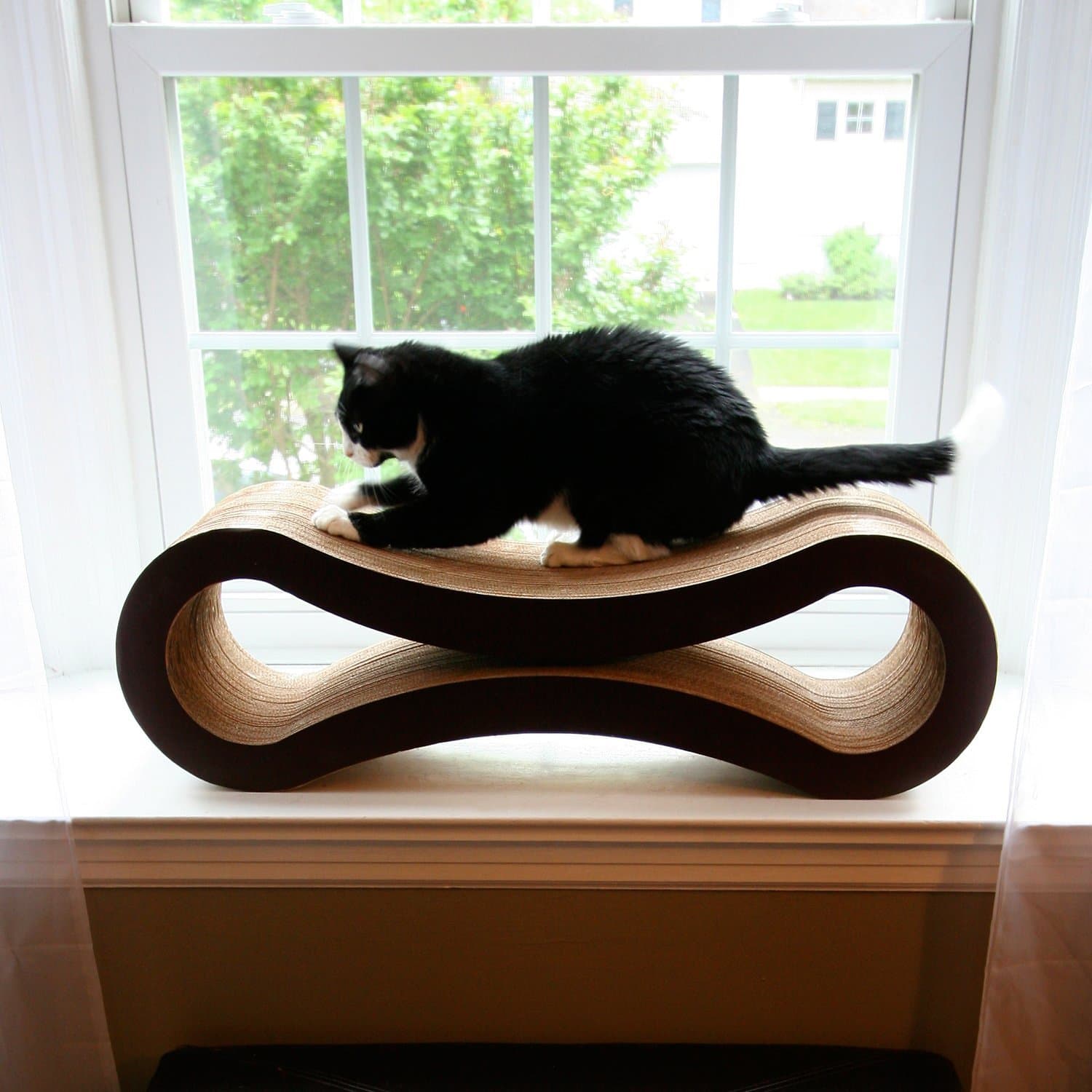Click to Skip Ahead
We give PetFusion Ultimate Cat Scratcher Lounge a rating of 4.8 out of 5 stars.
The PetFusion Ultimate Cat Scratcher Lounge is a stylish, high-quality cat scratcher that’s made from recycled cardboard. It’s a great option for cat owners who are looking for a long-lasting cat scratcher that will also look good in their homes.
Despite being made of cardboard, it is high-quality and built to last a long time, even with a very vigorous scratcher. You won’t have to replace it as much as a cheaper scratcher, allowing you to save money in the long run—despite this scratcher’s higher upfront cost. Plus, it’s pretty stylish with a sleek, modern look.
However, not everything about this scratcher is positive. For instance, it is quite large, so those in smaller spaces may have a hard time fitting it into their home. Keep reading for a complete review to find out if this scratcher is for you:
PetFusion Ultimate Cat Scratcher Lounge – A Quick Look

- Durable construction
- Made from recycled cardboard
- Stylish design
- Large size accommodates even huge cats
- It may not be suitable for small homes
- Cardboard is not replaceable like a carpet scratcher
Specifications

| Material: | Cardboard/Paper |
| Size: | 34” x 10.5” x 10.5” |
| Colors: | Walnut Brown & Slate Gray |
Durability and Value
What sets the PetFusion Ultimate Scratcher Lounge apart from similar scratchers is its durability. It’s built to last, standing up to tons of scratching. Unlike cheaper scratchers, it’s made using thick, quality cardboard that can withstand energetic scratchers and last in multi-cat households.
This durability translates to a longer lifespan, saving you money on replacements. Many users reported that they used this product for over a year or more.
Plus, it’s completely reversible. Therefore, once one side is worn out, you can flip it over to expose a fresh scratching surface. This feature effectively doubles the scratcher’s lifespan.
Spacious Design
This scratcher is generously big. It provides ample space for large cats to stretch out and scratch or even multiple cats at a time to use it. If you have a bigger cat breed like a Maine Coon, this cat scratcher may be exactly what you need.
That said, some do not like the larger size. It can be a bit much if you live in an apartment or a smaller home. Plus, some people just don’t need the larger design if they have smaller cats.
Style
Unlike many cat scratchers, this one was created to look good in your home. It has a modern design and comes in two different colors, allowing you to choose the best option for your feline. It’s perfect for cat owners who want their cat’s furniture to be functional and nice to look at.
You’re paying a bit more for this style, though. Plus, some cats may not like the modern, flowing design. If your cat prefers upright scratchers, this one probably isn’t best for them!

Frequently Asked Questions (FAQ)
Is it reversible?
Yes, the cat scratcher is completely reversible. Therefore, you can flip it over to get twice the use out of this cat scratcher.
Is this cat scratcher good for large cats?
This lounge is great for cats of all sizes. It’s on the larger side, so it should be big enough for even very big cats. However, this also means that it takes up more room.
Does the cardboard come off over time?
Yes, over time, the cardboard will come off. However, the cardboard is thicker than most, so it should stay together for longer. If you’re particularly against having cardboard bits around your house, a cardboard scratcher probably isn’t the best option.
Can this be recycled?
Once your cat has destroyed it, this cat scratcher is 100% recyclable.

What the Users Say
Many users praised the scratcher’s durability, stating that it withstands lots of use. Many positive reviews were left by cat owners who had purchased the cat scratcher several times—a testament to how much they liked it. Some owners of large cats enjoyed the size, as they found that other cat scratchers just weren’t big enough.
While it is a bit of a selling point, only a few reviewers mentioned the stylish design. Most were more concerned about the durability and size of the cat scratcher, not necessarily how it looked.
Some users did find the catnip included was helpful in training their cat to use the scratcher. However, others didn’t mention it at all. Plus, different cats have different reactions to catnip—something you need to keep in mind.
Some reviewers found that the size was a bit too large. If you are low on space, you probably don’t want a huge cat scratcher. Some others mentioned that their cats don’t prefer scratching cardboard. Some prefer sisal or a different material. These cats may not like this cat scratcher, even if it checks all your other boxes.
Conclusion
The main benefits of the PetFusion Ultimate Cat Scratcher are its style, larger size, and durability. It’s plenty big enough for larger cats to use, and it is pretty durable despite being made of cardboard. Unlike many cat scratchers, it also looks nice in most homes. You don’t have to worry about hiding it away somewhere or having an ugly cat scratcher in your living room.
However, the cat scratcher is pretty large. Therefore, it often isn’t suitable for smaller homes. If you don’t have plenty of room for a cat scratcher, you should probably look elsewhere.














